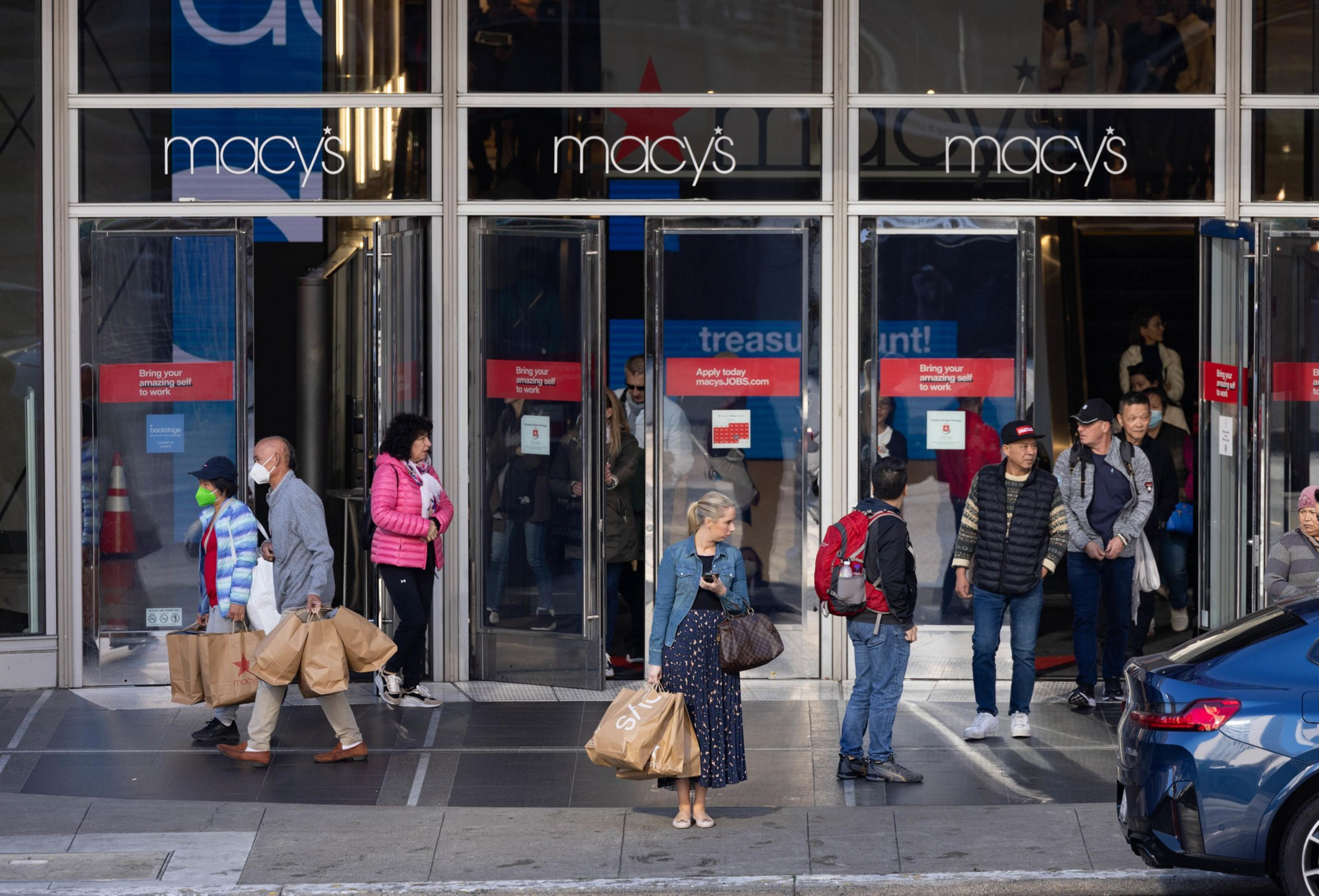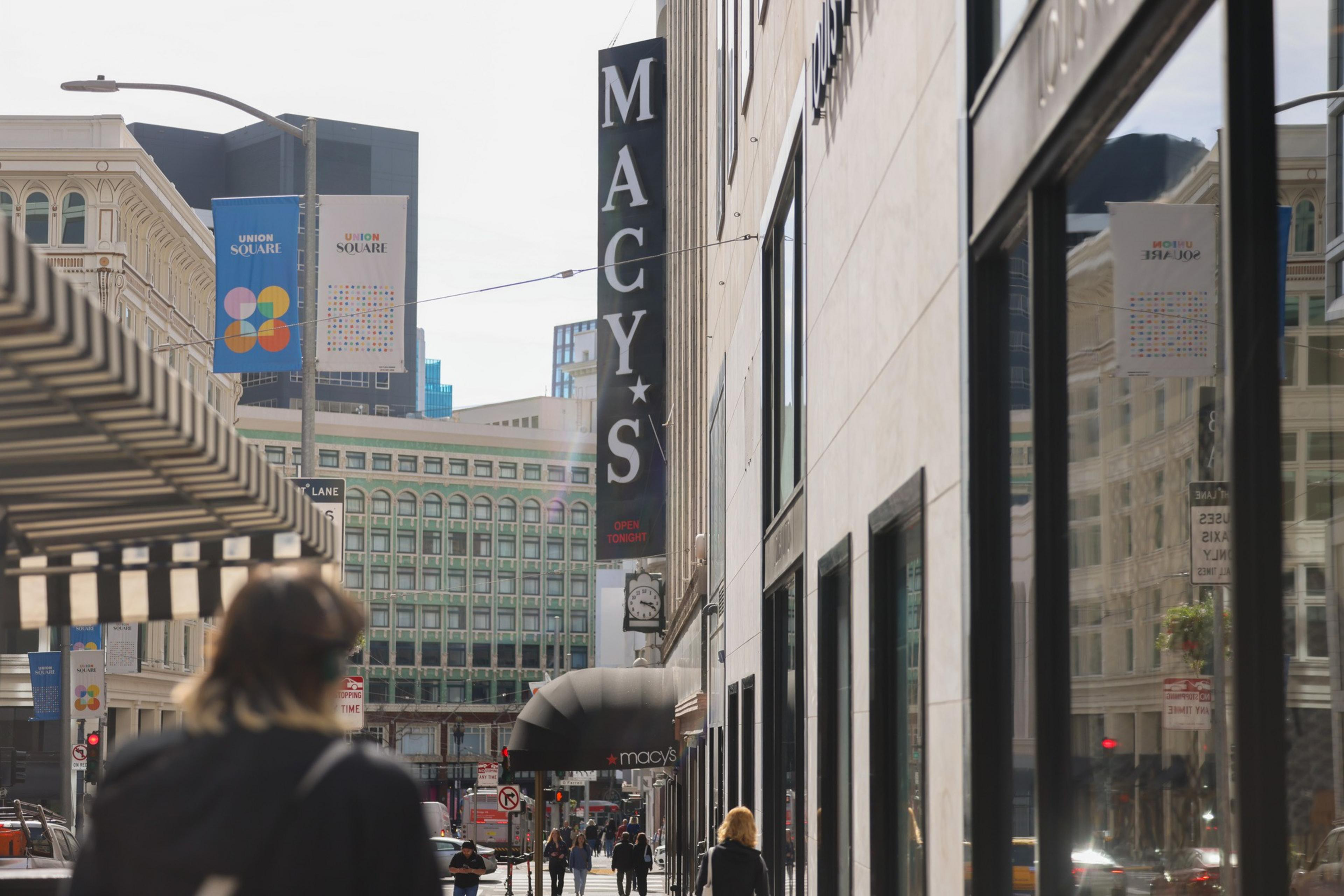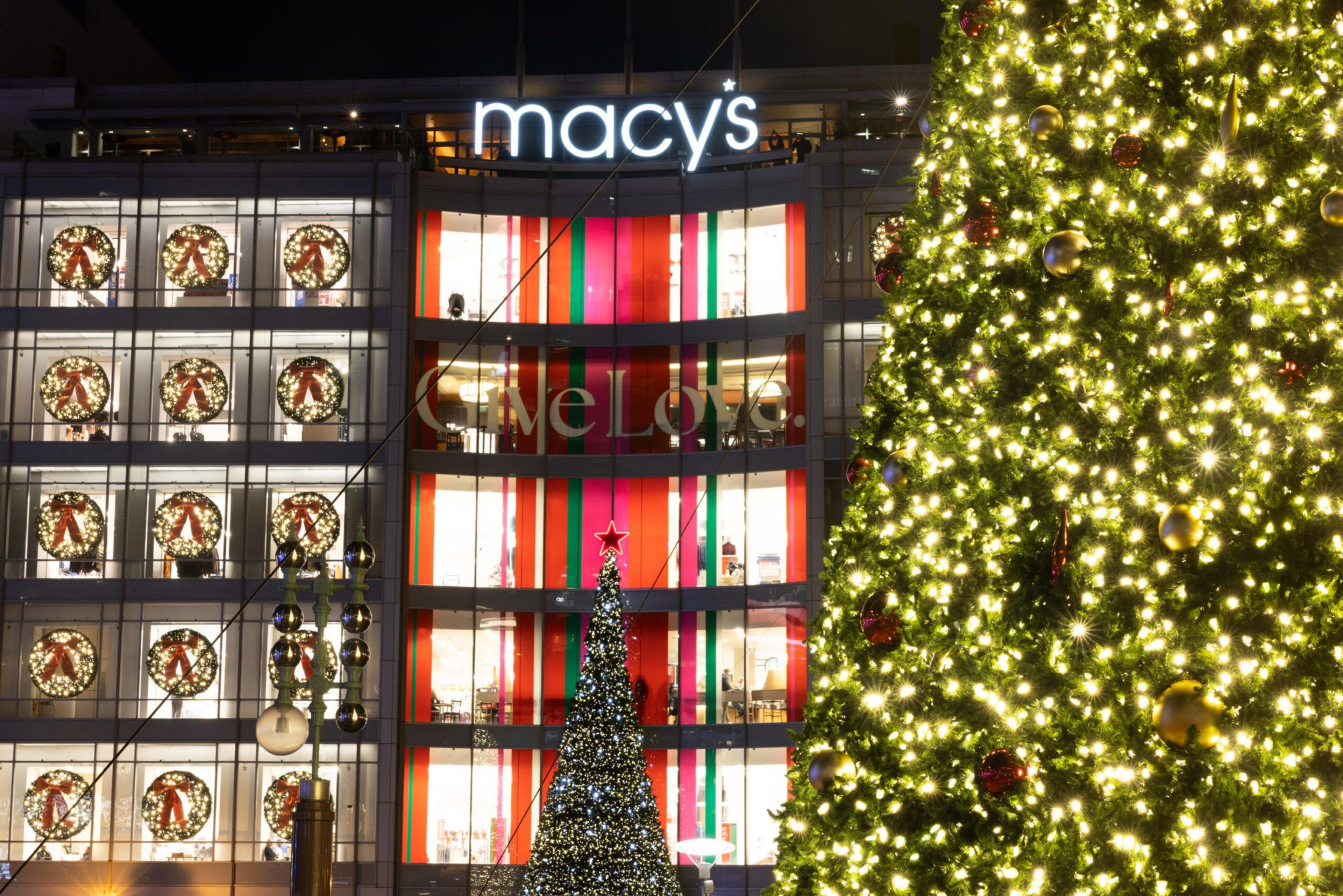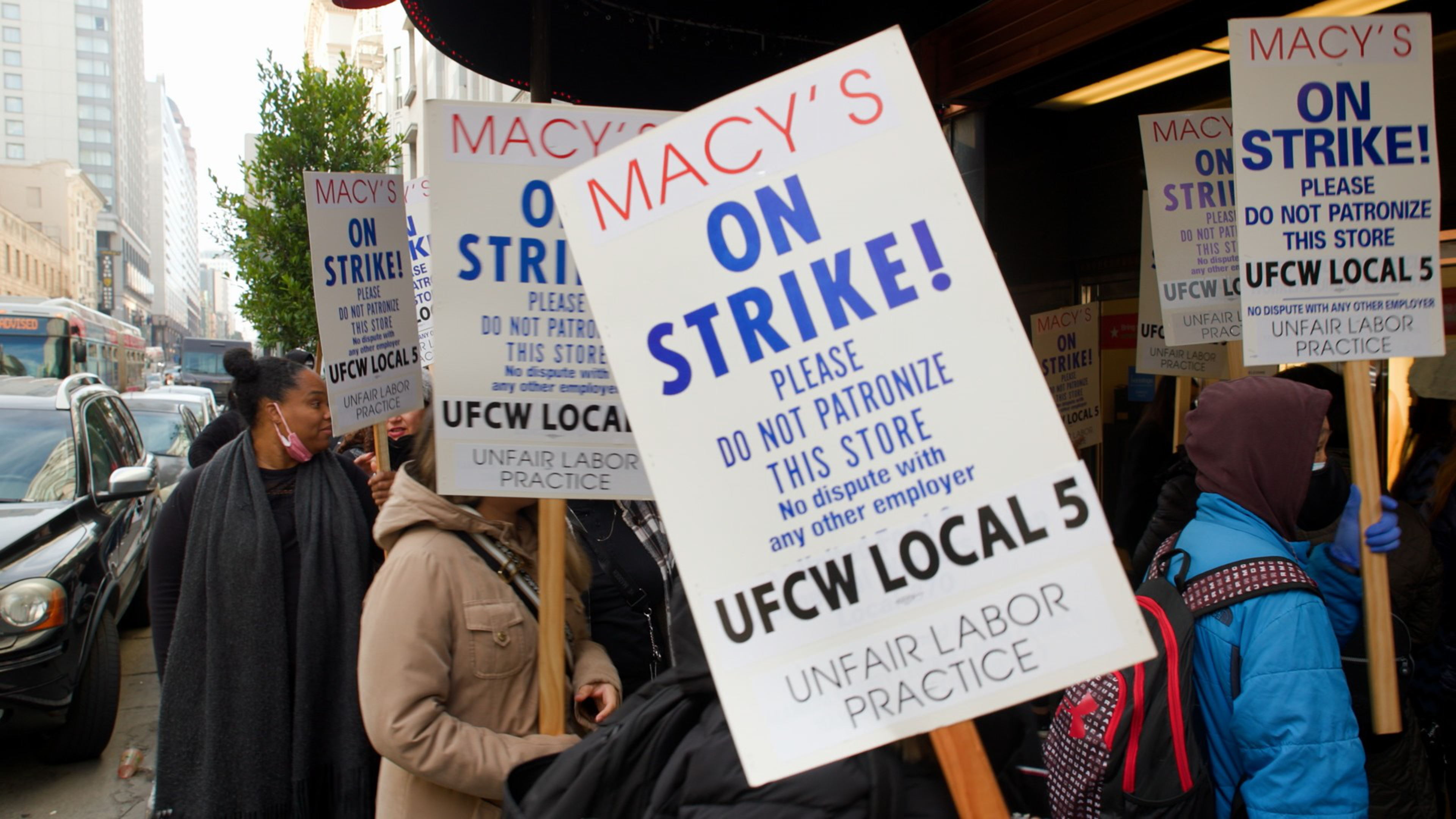San Francisco was rocked by the announcement in February that the Macy’s at Union Square, the city’s biggest department store, had decided to call it quits. The news set off another round of predictable hysteria, but the exit was never going to be as simple as flicking off the lights and locking the doors.
For one, Macy’s owns the building it occupies at 170 O’Farrell St., meaning the company has to pay for taxes and maintenance until it offloads the property. So rather than an immediate closure, the announcement functioned as a “for sale” sign.
Indeed, holiday shoppers can still enjoy the five-level store, along with its current cuteness-overload window display (opens in new tab) and rooftop Cheesecake Factory.
But offloading a commercial building in a contracting market like downtown San Francisco? Good luck, say developers and brokers polled by The Standard. Those familiar with the listing process for the property described it as “anemic” since demand for big-box retail was shrinking well before the pandemic left streets littered with vacancies.
Gone are the days where a buyer could easily come in and replace Macy’s Union Square retail presence like for like. Therefore, the most plausible scenario, sources say, involves maintaining the department store in some form, while opening the door to developers looking to reimagine portions of the space.
“No one has the money or desire to buy it outright right now,” said one commercial developer who spoke on the condition of anonymity to preserve working relationships. “That means Macy’s has to play an active role in facilitating a deal by staying on as an anchor tenant and ‘take back paper’ in return for the property.”
That type of deal is known as seller financing, an agreement that allows the buyer to pay the seller in installments rather than taking out a traditional mortgage. In lieu of cash, Macy’s would be taking on the role of a lender.
Macy’s did not respond to a request for comment. But city officials have said the retailer has been receptive to staying put in some form.

“We continue to be encouraged that Macy’s wants to work with the city to keep the site active as a prime retail destination in Union Square,” said Anne Taupier, director of joint development at the Office of Economic and Workforce Development. “They are working with high-quality local developers to maximize opportunity at the site, whether that be through a partnership or a sale.”
The San Francisco Chronicle reported that two local companies have surfaced (opens in new tab) as suitors for the building: the Prado Group and TMG Partners. The former is an experienced residential and retail developer; the latter specializes in mixed-use and office buildings. Both are working on large projects in the city, including in Presidio Heights and the Dogpatch.
Prado Group CEO Dan Safier declined to comment. A spokesperson for TMG Partners said it is one of “several groups” that listing brokerage Eastdil Secured has engaged, and the parties are “early in discussions.”
Another source familiar with the firm’s thinking said this is not the first time TMG has sniffed around Macy’s. The group was considering a pre-pandemic deal when the retailer sold two neighboring buildings in 2016 (opens in new tab) and 2019 (opens in new tab).
“The biggest challenge is that the [O’Farrell] building takes up three-quarters of a city block,” said the anonymous developer. “There is not much you can reuse. Anyone willing to take this on is going to have to have a 15-year view, at least.”
Previous redevelopment efforts, including a pitch by Morgan Stanley to turn the former men’s store on 120 Stockton St. into new office space, have stalled.
“Anyone trying to revive that part of Union Square right now probably has a lot of time on their hands,” said another developer in the market for office buildings. “Look at the previous proposals. They’re all sucking wind.”

Union Square Alliance CEO Marisa Rodriguez welcomed the renewed interest from local groups. She said she is encouraged by the fact that the developers named “have strong local roots and a deep understanding of this location’s emotional and economic significance, as well as Macy’s vital role in the fabric of our city.”
At its peak in the mid-1990s, Macy’s dominated San Francisco’s premier shopping area, spanning 1.1 million square feet of retail space across its flagship at 170 O’Farrell St., the I. Magnin Building at 90 Grant Ave., and the Macy’s Men’s store.
But since then, closures have become a regular pattern for the retailer, including 40 stores in 2015, 100 stores in 2017, and 150 this year. In February, the company appointed former Bloomingdale’s executive Tony Spring as CEO after his predecessor fought off multiple hostile takeover attempts and laid off 13% of corporate staff.
To make matters worse, the company had to delay its quarterly financial results this week after it announced that an employee had intentionally misstated $154 million in delivery expenses (opens in new tab) dating back to 2021.
Kazuko Morgan, a retail broker at Cushman & Wakefield, has decades of experience in Union Square. This year, she helped bring Nintendo to the vacant ground-floor space attached to the Westin St. Francis hotel on Powell Street.
“The good news for Macy’s is at least there’s an action plan now,” she said. “Who is going to have the vision to execute?”


